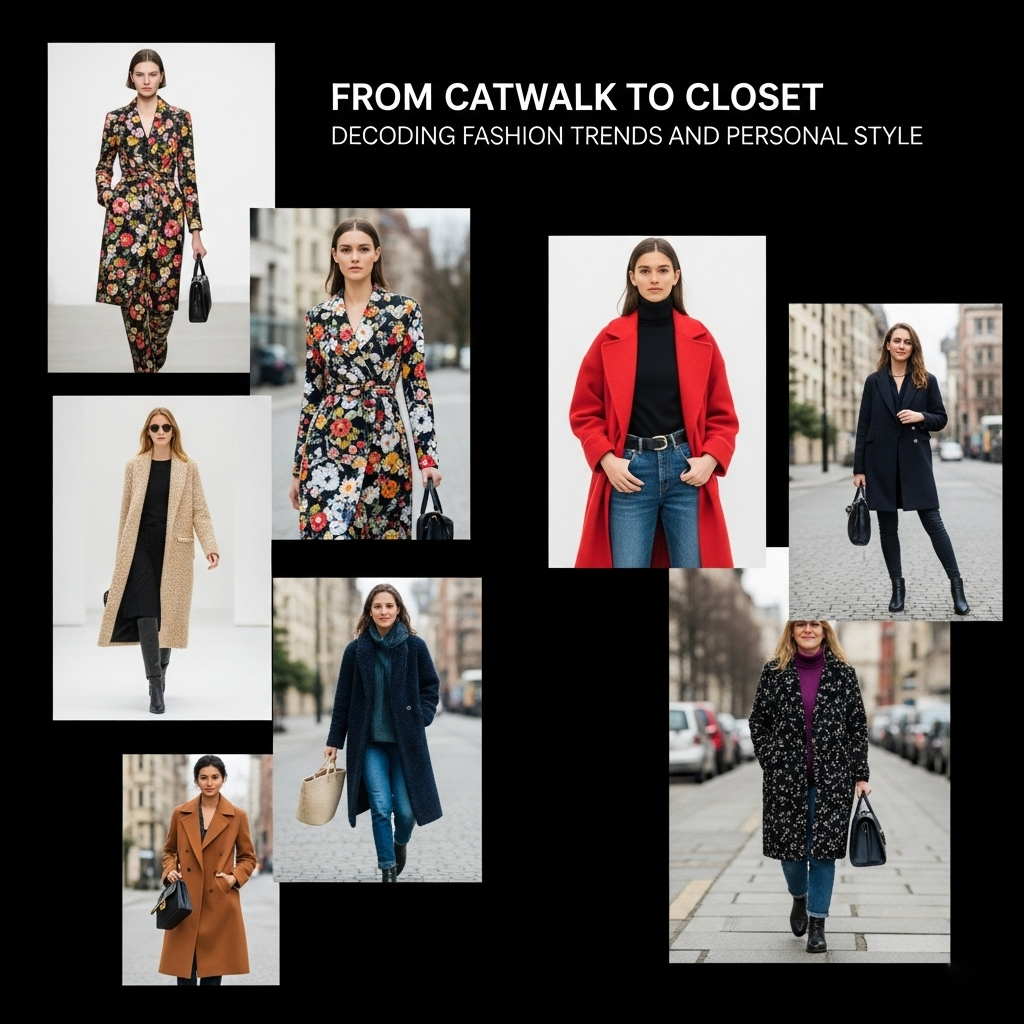Blog
From Catwalk to Closet: Decoding Fashion Trends and Personal Style

Fashion is a dynamic conversation, constantly evolving, shape-shifting, and reflecting the spirit of the times. At its core, this conversation is driven by trends – those powerful, often elusive shifts in popular aesthetics that dictate what’s “in” and “out.” For many, navigating this ever-changing landscape can feel overwhelming. How do trends emerge? How do they trickle down from exclusive runways to everyday closets? And more importantly, how can one decode these signals to cultivate a timeless and authentic personal style that truly reflects who they are, rather than simply chasing every fleeting fad?
The birth of a trend is a complex and fascinating process, rarely linear. It’s not usually a single designer decreeing a new silhouette. Instead, trends typically emerge from a confluence of sources. Haute couture and high-fashion runways serve as laboratories for avant-garde ideas, pushing creative boundaries and often hinting at future directions in terms of silhouettes, colors, and textures. However, inspiration also bubbles up from street style – the innovative ways individuals in urban centers reinterpret fashion. Pop culture, including music, movies, and television, plays a massive role, with celebrities and fictional characters often igniting widespread desires for certain looks. Social movements and shifts in societal values can also directly influence fashion, as seen with the rise of utilitarian wear during wartime or gender-fluid styles in recent years. Even technological innovations (new fabrics, digital printing) and global events can spark new directions. Trend forecasting agencies, composed of experts in sociology, economics, and design, dedicate themselves to analyzing these diverse inputs, identifying patterns, and predicting what will resonate with consumers in upcoming seasons.
One key aspect of understanding trends is recognizing fashion cycles. History rarely repeats itself exactly, but it often rhymes. Styles from previous decades frequently make a comeback, albeit with modern twists. The resurgence of 90s minimalism, 70s bohemian chic, or Y2K aesthetics are prime examples. These cyclical returns are often fueled by nostalgia, a desire for comfort, or a reinterpretation of classic silhouettes for a new generation. These cycles demonstrate that true originality is rare, but clever reinterpretation is constant.
While understanding trends is essential for the industry, the real art for individuals lies in cultivating personal style. This is the unique way you express yourself through clothing, independent of, yet often influenced by, prevailing trends. Personal style is deeply rooted in who you are and how you live. Factors that shape it include:
- Culture and upbringing: The traditional clothing, colors, and modesty norms you grew up with.
- Age and lifestyle: Your profession, hobbies, and daily activities dictate practical needs.
- Body type and preferences: What shapes and silhouettes flatter you and make you feel comfortable.
- Personality and values: Do you gravitate towards bold and expressive, or understated and classic? Do you prioritize comfort, sustainability, or luxury?
- Budget: Your financial resources significantly influence your shopping choices.
A practical approach to developing personal style often starts with building a capsule wardrobe. This involves curating a versatile collection of high-quality, timeless essential pieces that can be mixed and matched to create numerous outfits. Think well-fitting jeans, classic shirts, a versatile blazer, and neutral-colored staples. These pieces serve as the foundation upon which you can layer trendy items or unique accessories to inject personality without overhauling your entire closet every season.
Beyond staples, understanding your body type and color palette can dramatically enhance your style. Learning which silhouettes flatter your unique proportions can make a significant difference in how clothes look and feel on you. Similarly, identifying the colors that best complement your skin tone, hair color, and eye color can make your complexion glow and your outfits pop. These are not rigid rules but guidelines to empower you to make more informed choices that boost your confidence.
Accessorizing is the secret weapon of personal style. Jewelry, handbags, shoes, belts, scarves, and even eyewear can completely transform an outfit, adding character, polish, or a touch of whimsy. A simple black dress, for example, can go from casual to elegant to edgy simply by changing the accessories. They offer an accessible way to experiment with trends without a full wardrobe overhaul, and they often allow for bolder expressions of personality.
Ultimately, cultivating personal style is about more than just looking good; it’s about feeling good and expressing yourself authentically. When your clothes truly reflect who you are, they become a source of confidence and empowerment. It’s a journey of self-discovery, where you experiment, learn from your choices, and gradually refine your aesthetic. This process often leads to mindful consumption – choosing quality over quantity, investing in pieces you love, and considering the longevity and versatility of an item before purchasing. It’s a shift from impulsive buying to intentional styling.
In conclusion, while fashion trends will always be a fascinating reflection of our collective desires and cultural shifts, true style transcends them. It’s a personal language, a carefully curated expression of identity that evolves with us. By understanding how trends work and focusing on what genuinely resonates with our individual needs, preferences, and values, we can move from passively following the catwalk to confidently curating a closet that truly tells our unique story. The ultimate fashion statement isn’t about wearing the latest trend, but about wearing what makes you feel like your most authentic self.
